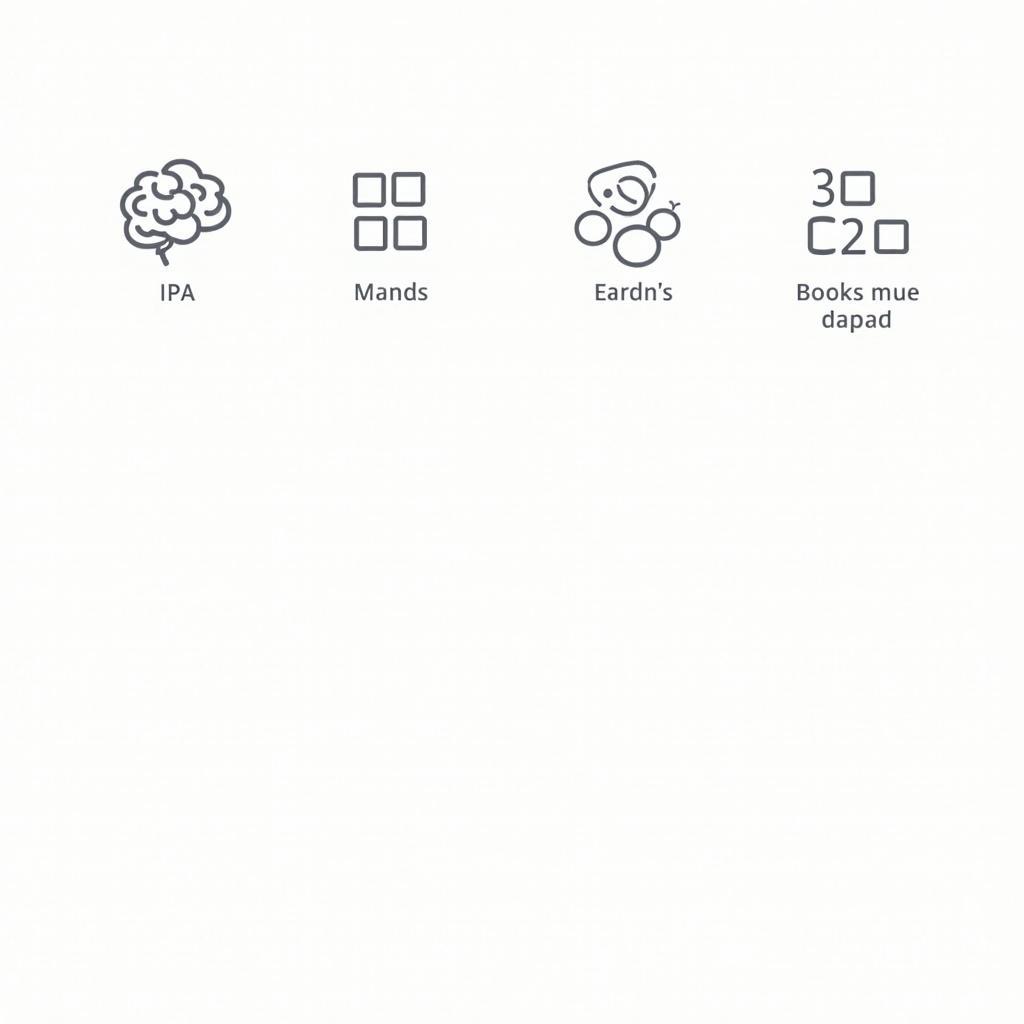Trong những năm gần đây, chủ đề The Benefits Of Early Math Education xuất hiện ngày càng dày trong đề IELTS Writing Task 2, dưới các biến thể như “nên bắt đầu giáo dục sớm hay muộn”, “ưu tiên Toán/Khoa học so với Nghệ thuật”, hay “tăng cường kỹ năng tài chính ở trường học”. Lý do là Toán học nền tảng sớm không chỉ hỗ trợ tư duy logic, mà còn củng cố kỹ năng ngôn ngữ, quản lý tài chính cơ bản, và khả năng giải quyết vấn đề – đúng trọng tâm đánh giá “giá trị giáo dục” trong các đề thi thực tế. Bài viết này giúp bạn: nắm 3 đề thi tiêu biểu gần sát chủ đề, luyện 3 bài mẫu (Band 5-6, 6.5-7, 8-9), hiểu cách chấm điểm chi tiết, thu thập bộ từ vựng-cấu trúc ăn điểm, và sở hữu checklist ôn luyện khoa học. Để mở rộng góc nhìn về ứng dụng Toán học sớm trong quản lý tiền bạc, bạn có thể tham khảo thêm một ví dụ có liên quan về tầm quan trọng của năng lực tài chính ở người trẻ: importance of financial literacy in young adults.
Nội dung bài viết
- 1. Đề Writing Part 2
- 2. Bài mẫu Band 8-9
- Phân tích Band điểm
- Các yếu tố giúp bài này được chấm điểm cao
- 3. Bài mẫu Band 6.5-7
- Phân tích Band điểm
- So sánh với bài Band 8-9
- 4. Bài mẫu Band 5-6
- Phân tích Band điểm
- Những lỗi sai của bài – phân tích & giải thích
- Cách Cải Thiện Từ Band 6 Lên Band 7
- 5. Từ vựng quan trọng cần nhớ
- 6. Cấu trúc câu dễ ăn điểm cao
- 7. Checklist Tự Đánh Giá
- Kết bài
Một số đề thi thực tế đã được ghi nhận rộng rãi trên các nguồn uy tín (IELTS Liz, IELTS-Blog, British Council):
- “Some people think that children should begin their formal education at a very early age, while others think they should begin at least at seven years old. Discuss both views and give your opinion.”
- “Many people believe that subjects such as Art and Music are as important as Mathematics and English. To what extent do you agree or disagree?”
- “Some people think that schools should teach children how to manage money. Do you agree or disagree?”
Các đề này xoay quanh cốt lõi: thời điểm bắt đầu, mức độ ưu tiên môn Toán, và lợi ích thực tiễn – nền tảng lý tưởng để khai thác The benefits of early math education một cách trúng ý chấm.
 The benefits of early math education trong IELTS Writing Task 2 với ví dụ đề và cách tiếp cận
The benefits of early math education trong IELTS Writing Task 2 với ví dụ đề và cách tiếp cận
1. Đề Writing Part 2
Some people argue that children should start learning mathematics as early as possible, even before primary school. Do the advantages of this outweigh the disadvantages?
Dịch đề: Một số người cho rằng trẻ em nên bắt đầu học Toán càng sớm càng tốt, thậm chí trước tiểu học. Lợi ích có lớn hơn bất lợi không?
Phân tích đề bài:
- Dạng câu hỏi và yêu cầu: Advantages outweigh disadvantages (cân nhắc lợi ích/ bất lợi rồi đưa kết luận rõ ràng lợi ích có lớn hơn không). Cần có lập trường nhất quán, nêu ít nhất 2 lợi ích chính và 1-2 bất lợi, sau đó kết luận.
- Thuật ngữ quan trọng:
- “as early as possible”: nhấn mạnh mốc trước tiểu học (preschool/kindergarten).
- “outweigh”: yêu cầu so sánh tổng thể, không chỉ liệt kê.
- Lỗi thường gặp:
- Lạc đề sang “giáo dục nói chung” mà quên trọng tâm là Toán sớm.
- Liệt kê nhiều ý nhưng không phát triển ví dụ/cơ chế.
- Thiếu giải pháp giảm bất lợi nên kết luận thiếu thuyết phục.
- Cách tiếp cận chiến lược:
- Dàn ý 2 lợi ích cốt lõi (cognitive development, numeracy for daily life) + 1 bất lợi (áp lực, rote learning).
- Đề xuất mô hình “play-based, low-stakes” để giảm rủi ro.
- Chốt “advantages outweigh” với điều kiện thực thi đúng cách.
2. Bài mẫu Band 8-9
Bài viết Band 8-9 cần: lập luận mạch lạc, phát triển ý sâu, dẫn chứng hợp lý, từ vựng học thuật chính xác, câu phức đa dạng; thể hiện quan điểm nhất quán.
Essay (298 words):
While some parents worry that introducing mathematics before primary school could create pressure, I contend that the advantages decisively outweigh the drawbacks when early numeracy is delivered in developmentally appropriate ways. Early math does not mean drilling worksheets; it means play-based exploration of patterns, quantities, and spatial relations that primes children’s minds for later formal learning.
First, early math provides cognitive scaffolding. Counting objects, grouping by attributes, or composing shapes nurtures symbolic reasoning and executive function—skills that transfer to reading, science, and problem solving. Research consistently shows that preschool numeracy predicts later academic success more strongly than early literacy does, largely because number sense underpins proportional thinking and logical inference.
Second, starting early can reduce long-term inequality. Many children enter school lacking basic number concepts because their home environments offer limited mathematical talk. A gentle, low-stakes curriculum—story problems with toys, cooking measurements, or board games—makes math accessible and enjoyable, thereby preventing the math anxiety that often emerges in primary school.
Admittedly, there are risks. If schools mistake “early” for “accelerated,” they may push abstract algorithms too soon, triggering frustration. Similarly, over-reliance on rote learning can crowd out curiosity. Yet these hazards reflect poor pedagogy, not the idea of early math itself. With well-trained teachers, mixed manipulatives, and spiraled tasks, instruction can remain concrete, social, and challenging without being stressful.
In short, the question is not whether to teach math early, but how. When delivered through play, stories, and real-life contexts, early mathematics builds a durable conceptual foundation, strengthens general thinking skills, and narrows opportunity gaps. Under those conditions, the educational and social returns clearly exceed the manageable downsides.
Phân tích Band điểm
| Tiêu chí | Band | Nhận xét |
|---|---|---|
| Task Response (Hoàn thành yêu cầu) | 8.5 | Trả lời đúng trọng tâm “outweigh”, có luận điểm rõ ràng, phát triển 2 lợi ích chính và phản biện rủi ro kèm giải pháp. Kết luận nhất quán, thuyết phục. |
| Coherence & Cohesion (Mạch lạc & Liên kết) | 8.0 | Bố cục mở bài–thân bài–kết bài chuẩn; ý được sắp xếp theo logic “lợi ích–rủi ro–điều kiện”. Liên kết mượt với từ nối ngầm và nhắc lại khái niệm chủ chốt. |
| Lexical Resource (Từ vựng) | 8.5 | Từ vựng học thuật chính xác: cognitive scaffolding, executive function, manipulatives, spiraled tasks. Collocations tự nhiên, ít lặp và không sai sắc thái. |
| Grammatical Range & Accuracy (Ngữ pháp) | 8.0 | Câu phức đa dạng (mệnh đề nhượng bộ, quan hệ, cụm phân từ), ít lỗi. Dấu câu và chia thì chính xác, nhấn nhá hợp lý. |
Các yếu tố giúp bài này được chấm điểm cao
- Nêu rõ “early math ≠ drilling”, định nghĩa phạm vi đúng, tránh hiểu sai đề.
- Lợi ích gắn cơ chế: từ hoạt động cụ thể (đếm, ghép hình) đến kỹ năng bậc cao (symbolic reasoning).
- Thừa nhận rủi ro và quy về “bad pedagogy”, đưa giải pháp thực thi (play-based, spiraled).
- Liên kết luận điểm với công bằng giáo dục (inequality) – ý sâu, có chiều xã hội.
- Từ vựng chuyên môn đúng chỗ, collocations tự nhiên.
- Câu chủ đề rõ ràng đầu mỗi đoạn, kết đoạn chốt ý về “returns exceed downsides”.
3. Bài mẫu Band 6.5-7
Đặc điểm: Ý có chiều sâu vừa phải, từ vựng đa dạng ở mức khá, có vài chỗ diễn đạt chưa thật tinh tế, nhưng lập luận vẫn rõ ràng và nhất quán.
Essay (266 words):
People increasingly argue that mathematics should be taught before primary school. I believe the benefits are greater than the drawbacks, provided that early lessons are hands-on and playful rather than purely academic.
The first advantage is better thinking skills. When children sort objects, count steps, or compare sizes, they are practicing pattern recognition and simple logic. These habits help them in later subjects such as science and even reading. A second benefit is confidence: children who meet numbers in friendly contexts—games, storytelling, cooking—often feel less afraid when formal math starts. If schools wait too long, some pupils may develop a belief that math is difficult and “not for them.”
On the other hand, an early start can backfire if teachers push abstract content. Young learners can be discouraged by memorizing rules they do not understand. Also, parents may mistakenly compare children and create pressure. However, these problems can be reduced by using concrete materials, small-group activities, and simple assessments that focus on understanding rather than speed.
In conclusion, starting math early is beneficial when it uses play, stories, and real-life examples. It builds useful habits and confidence while avoiding stress. Schools should train teachers and design materials that fit children’s development so that early math becomes a bridge, not a barrier.
Phân tích Band điểm
| Tiêu chí | Band | Nhận xét |
|---|---|---|
| Task Response (Hoàn thành yêu cầu) | 7.0 | Trả lời đúng yêu cầu “outweigh”, có lập trường rõ, nêu lợi ích–bất lợi–giải pháp. Thiếu dẫn chứng sâu rộng, nhưng đủ phát triển. |
| Coherence & Cohesion (Mạch lạc & Liên kết) | 7.0 | Cấu trúc đoạn rõ, từ nối hợp lý. Một số chuyển ý còn đơn giản, chưa có liên kết ẩn tinh tế. |
| Lexical Resource (Từ vựng) | 7.0 | Dùng được cụm như pattern recognition, hands-on; vẫn còn lặp từ “benefit/advantage” ở vài đoạn, ít biến thể đồng nghĩa. |
| Grammatical Range & Accuracy (Ngữ pháp) | 6.5 | Câu đa dạng ở mức khá; thi thoảng cấu trúc còn thẳng, ít mệnh đề quan hệ/phân từ nâng cao. Không có lỗi lớn. |
So sánh với bài Band 8-9
- Độ sâu lập luận: Band 8-9 có cơ chế học thuật (executive function, spiraled tasks); bài 6.5-7 giải thích ở mức thực hành.
- Vốn từ: Bài 8-9 đa dạng, chính xác về thuật ngữ; bài 6.5-7 dùng từ khá, nhưng còn lặp và ít collocations học thuật.
- Cấu trúc câu: Bài 8-9 nhiều cấu trúc phức; bài 6.5-7 thiên về câu đơn/câu ghép an toàn.
4. Bài mẫu Band 5-6
Đặc điểm: Có ý nhưng phát triển chưa sâu; mạch lạc vừa phải; lỗi mạo từ, số ít/số nhiều, collocation chưa tự nhiên; một số câu chưa rõ nghĩa.
Essay (258 words):
Some people believe kids should learn math very early. I mostly agree because early math brings many good things, but there are also problems. First, when children do numbers early, they can think better and faster. They learn to count and compare, which is useful for life and school. In another hand, they can also improve memory by remembering many formula. If they start late, it is hard to catch up and they feel scared of math.
However, there are disadvantages. Too much maths make children tired and bored. Some parents push them to do tests and homework every day. This create pressure and even health problems. Also, if teachers only ask students to learn by heart, children do not understand the idea behind numbers. They maybe just remember steps and forget later.
In my view, we should teach math early but with play and real-life tasks. For example, using blocks, cooking, or simple games is better than only worksheets. Schools should train teachers to use clear examples and friendly assessments. Parents also need to relax and not compare children too much. With these solutions, the benefits can be bigger than the disadvantages.
Phân tích Band điểm
| Tiêu chí | Band | Nhận xét |
|---|---|---|
| Task Response (Hoàn thành yêu cầu) | 6.0 | Có lập trường và nêu lợi ích–bất lợi, nhưng phát triển còn hời hợt, ít ví dụ cụ thể. |
| Coherence & Cohesion (Mạch lạc & Liên kết) | 6.0 | Bố cục cơ bản đầy đủ; từ nối đôi chỗ sai (“In another hand”). Lặp ý và chưa có chuyển đoạn mượt. |
| Lexical Resource (Từ vựng) | 5.5 | Collocations chưa tự nhiên (“remembering many formula”); lặp từ; vài từ dùng sai sắc thái. |
| Grammatical Range & Accuracy (Ngữ pháp) | 5.5 | Lỗi số ít/số nhiều, chia động từ, mạo từ; cấu trúc đơn giản; vài câu mơ hồ. |
Những lỗi sai của bài – phân tích & giải thích
| Lỗi sai | Loại lỗi | Sửa lại | Giải thích |
|---|---|---|---|
| In another hand | Từ nối sai | On the other hand | Collocation cố định, không dùng “another”. |
| many formula | Số ít/số nhiều | many formulas/formulae | “Formula” số nhiều là “formulas” (thông dụng) hoặc “formulae” (học thuật). |
| Too much maths make | Hòa hợp chủ-vị | Too much math makes | “Math” không đếm được và dùng động từ số ít “makes”. |
| This create | Hòa hợp chủ-vị | This creates | Chủ ngữ số ít “This” → “creates”. |
| learn by heart (ở đây) | Dùng sai sắc thái | rote learning | Học vẹt mang tính kỹ thuật: “rote learning” phù hợp hơn. |
| They maybe just remember | Trật tự từ | They may just remember | Trợ động từ “may” + V nguyên mẫu; “maybe” là trạng từ/cụm độc lập. |
| friendly assessments | Collocation | low-stakes assessments | Collocation học thuật tự nhiên hơn, sát ngữ cảnh giáo dục. |
Cách Cải Thiện Từ Band 6 Lên Band 7
- Thêm ví dụ cụ thể có cơ chế: ví dụ “board games for number sense”, “measuring ingredients to grasp fractions”.
- Nâng cấp từ vựng: thay “learn by heart” → “rote learning”; “good things” → “benefits/returns”.
- Sửa triệt để lỗi ngữ pháp cơ bản: mạo từ (a/the), số ít/số nhiều, hòa hợp chủ-vị.
- Đa dạng cấu trúc câu: thêm mệnh đề quan hệ, câu điều kiện, cụm phân từ để tăng độ linh hoạt.
- Kết nối ý mượt hơn: dùng “Granted,…”, “By the same token,…”, “Crucially,…”.
Để đào sâu mối liên hệ giữa Toán học sớm và kỹ năng tài chính trong đời sống, bạn có thể xem thêm một góc nhìn liên quan: importance of financial literacy in young adults, giúp mở rộng ví dụ trong phần Task Response.
5. Từ vựng quan trọng cần nhớ
| Từ/Cụm từ | Loại từ | Phiên âm | Nghĩa tiếng Việt | Ví dụ (English) | Collocations |
|---|---|---|---|---|---|
| numeracy | n. | /ˈnjuːmərəsi/ | năng lực số học cơ bản | Early numeracy predicts later achievement. | basic/early numeracy; numeracy skills |
| cognitive scaffolding | n. | /ˈkɒɡnɪtɪv ˈskæfəʊldɪŋ/ | giàn đỡ nhận thức | Play creates cognitive scaffolding for math. | provide/build cognitive scaffolding |
| symbolic reasoning | n. | /sɪmˈbɒlɪk ˈriːzənɪŋ/ | tư duy ký hiệu | Math nurtures symbolic reasoning in children. | develop/strengthen symbolic reasoning |
| pattern recognition | n. | /ˈpætən ˌrɛkəɡˈnɪʃn/ | nhận diện mẫu | Games support pattern recognition and logic. | enhance/foster pattern recognition |
| executive function | n. | /ɪɡˈzɛkjʊtɪv ˈfʌŋkʃn/ | chức năng điều hành | Puzzles improve executive function. | improve/support executive function |
| manipulatives | n. | /məˌnɪpjʊˈlətɪvz/ | đồ vật học cụ thao tác | Use manipulatives to teach number sense. | use/provide manipulatives |
| play-based learning | n. | /pleɪ beɪst ˈlɜːnɪŋ/ | học thông qua chơi | Play-based learning reduces anxiety. | adopt/implement play-based learning |
| spiral curriculum | n. | /ˈspaɪərəl ˈkʌrɪkjʊləm/ | chương trình xoáy ốc | A spiral curriculum revisits core ideas. | design/implement a spiral curriculum |
| rote learning | n. | /rəʊt ˈlɜːnɪŋ/ | học vẹt | Rote learning can harm understanding. | rely on/avoid rote learning |
| math anxiety | n. | /mæθ ænˈzaɪəti/ | lo âu toán học | Early success lowers math anxiety. | reduce/trigger math anxiety |
| transferable skills | n. | /trænsˈfɜːrəbl skɪlz/ | kỹ năng chuyển giao | Numeracy builds transferable skills. | develop/apply transferable skills |
| low-stakes assessment | n. | /ləʊ steɪks əˈsɛsmənt/ | đánh giá áp lực thấp | Use low-stakes assessment in preschool. | design/use low-stakes assessment |
| Granted, … | linker | /ˈɡrɑːntɪd/ | thừa nhận là… | Granted, early math can be misused. | Granted + clause |
| By the same token, … | linker | /baɪ ðə seɪm ˈtəʊkən/ | tương tự, vì lý do giống vậy | By the same token, it narrows gaps. | By the same token + clause |
| advantage/benefit (synonyms) | n. | /ədˈvɑːntɪdʒ/ /ˈbɛnɪfɪt/ | lợi thế/lợi ích | The benefits outweigh the drawbacks. | clear/tangible/long-term benefits |
 Bảng từ vựng về The benefits of early math education với ví dụ và collocations
Bảng từ vựng về The benefits of early math education với ví dụ và collocations
6. Cấu trúc câu dễ ăn điểm cao
- Câu phức với mệnh đề phụ thuộc
- Công thức: Mệnh đề chính + when/while/although/because + mệnh đề phụ.
- Ví dụ (từ bài 8-9): While some parents worry…, I contend that the advantages… outweigh the drawbacks.
- Vì sao ghi điểm: Tạo tương phản/nhượng bộ, thể hiện lập trường rõ.
- Ví dụ bổ sung:
- Although early math can be misapplied, it is beneficial when play-based.
- Because numeracy underpins reasoning, delaying it is unwise.
- Lỗi thường gặp: Dùng “despite/although” lẫn lộn; thiếu dấu phẩy sau mệnh đề phụ đứng đầu.
- Mệnh đề quan hệ không xác định (non-defining relative clause)
- Công thức: Danh từ, which/who + mệnh đề phụ (thêm thông tin), dấu phẩy bắt buộc.
- Ví dụ: …play-based exploration…, which primes children’s minds for later learning.
- Vì sao: Bổ sung thông tin học thuật mạch lạc, tự nhiên.
- Ví dụ: Early numeracy, which predicts later success, should be prioritized.
- Lỗi: Quên dấu phẩy; lạm dụng “that” thay cho “which”.
- Cụm phân từ (participle phrases)
- Công thức: V-ing/V-ed + cụm bổ nghĩa, diễn đạt nguyên nhân/điều kiện/kết quả.
- Ví dụ: Research consistently shows…, largely because underpinning number sense enables inference. (Có thể rút gọn: …, underpinning proportional thinking.)
- Vì sao: Tăng tính cô đọng, học thuật.
- Ví dụ: Using manipulatives, teachers keep tasks concrete. Motivated by curiosity, children persist longer.
- Lỗi: Treo chủ ngữ, khiến nghĩa lệch.
- Câu chẻ (Cleft sentences)
- Công thức: It is/was + X + that/who + mệnh đề.
- Ví dụ: It is how we teach early math that determines its impact.
- Vì sao: Nhấn mạnh lập điểm chính.
- Ví dụ: It is early success that reduces math anxiety. It was play, not drills, that engaged them.
- Lỗi: Nhầm với “There is/There are”; sai thì quá khứ/hiện tại.
- Câu điều kiện nâng cao (Type 2/3/mixed)
- Công thức: If + past simple, would + V; If + had V3, would have + V3; Mixed forms.
- Ví dụ: If schools mistake “early” for “accelerated,” they may trigger frustration.
- Vì sao: Đưa giả định–hậu quả, tăng sức thuyết phục.
- Ví dụ: If teachers relied on rote learning, understanding would suffer. If parents had avoided pressure, anxiety might not have developed.
- Lỗi: Lẫn lộn thì; dùng “will” trong mệnh đề “if” giả định.
- Đảo ngữ (Inversion) nhấn mạnh
- Công thức: Only when/Not until/Hardly… when + trợ động từ + S + V.
- Ví dụ: Only when math is playful do children build durable understanding.
- Vì sao: Tạo nhấn mạnh tinh tế, giàu sắc thái học thuật.
- Ví dụ: Not until concepts are concrete do results improve. Rarely does rote learning inspire curiosity.
- Lỗi: Quên đảo trợ động từ; dùng sai thì.
7. Checklist Tự Đánh Giá
- Trước khi viết:
- Xác định rõ dạng bài (agree/disagree; outweigh; discuss both).
- Chọn 2-3 ý cốt lõi, có ví dụ cơ chế (how/why), tránh liệt kê hời hợt.
- Lập dàn ý: mỗi đoạn một luận điểm, có bằng chứng và mini-kết.
- Trong khi viết:
- Mở bài nêu lập trường rõ sớm.
- Mỗi đoạn thân bài: câu chủ đề → giải thích → ví dụ/ cơ chế → kết nối lại đề.
- Dùng 2-3 cấu trúc đa dạng (mệnh đề nhượng bộ, cụm phân từ, câu chẻ).
- Sau khi viết:
- Soát 3 lỗi “kinh điển”: mạo từ (a/an/the), hòa hợp chủ-vị, số ít/số nhiều.
- Tránh lặp từ: thay bằng từ đồng nghĩa/collocations.
- Kiểm tra kết luận có “trả lời đúng câu hỏi đề” (e.g., outweigh? how much? điều kiện?).
- Mẹo quản lý thời gian:
- 3-4’ phân tích đề + dàn ý; 25-27’ viết; 4-5’ soát lỗi.
- Không sa đà ví dụ dài; ưu tiên ví dụ “mô tả cơ chế” ngắn gọn, trúng ý.
- Nếu bí từ, mô tả bằng cụm đơn giản nhưng chính xác, tránh cố dùng từ lạ.
Kết bài
Chủ đề The benefits of early math education phù hợp nhiều biến thể đề Task 2: ưu/nhược điểm, so sánh ưu tiên môn học, hay giáo dục sớm. Bạn đã có: 3 bài mẫu theo dải band 5-9, bảng chấm chi tiết, bộ từ vựng–cấu trúc ăn điểm, cùng checklist thực hành. Con đường cải thiện là luyện viết có mục tiêu: chọn 1 đề, viết theo dàn ý 4 đoạn, áp dụng 2-3 cấu trúc nâng cao, rồi đối chiếu checklist và sửa lỗi. Với 3-4 bài/tuần trong 4-6 tuần, đa số học viên có thể nâng 0.5–1.0 band cho Task 2. Đối với những ai quan tâm đến ứng dụng thực tiễn của Toán sớm vào đời sống, nội dung về importance of financial literacy in young adults sẽ giúp bạn mở rộng ví dụ và vốn từ.
Hãy bắt đầu ngay: viết một bài 260-290 từ theo đề trong mục 1, đăng trong nhóm học hoặc gửi cho bạn học để nhận phản hồi. Mỗi vòng sửa lỗi nên tập trung vào 1-2 tiêu chí (ví dụ: Task Response + Grammar) để tiến bộ rõ rệt. Lặp lại quy trình trong 4 tuần, bạn sẽ thấy sự khác biệt ở khả năng lập luận, vốn từ và độ tự tin khi vào phòng thi.


